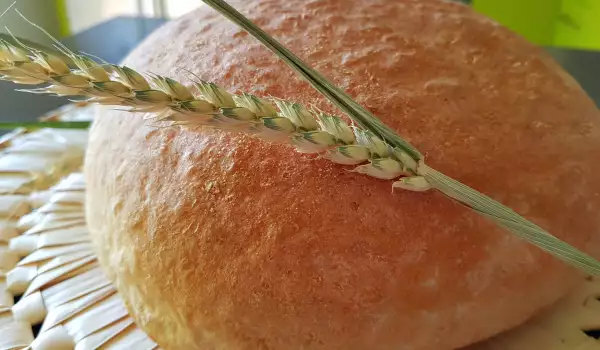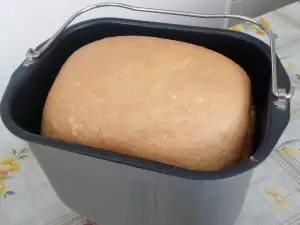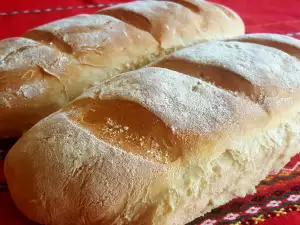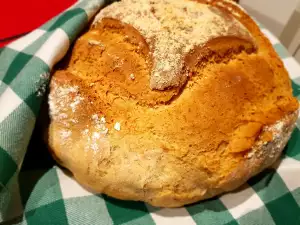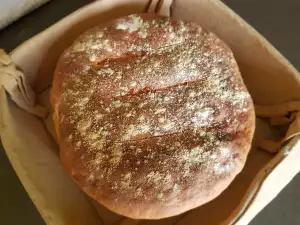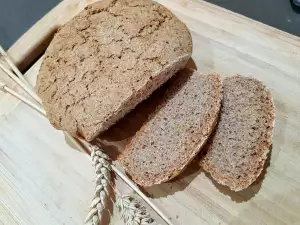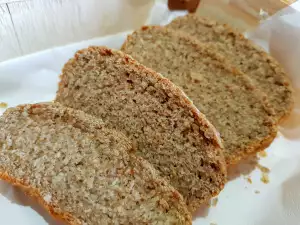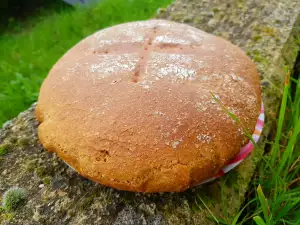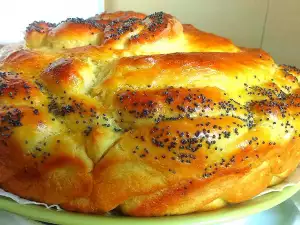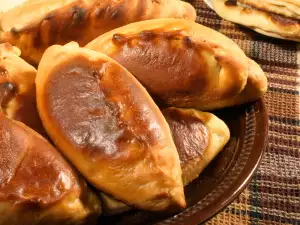How to make
Not every ordinary household has a furnace available in which we could bake an authentic rustic bread.
However, we can imitate one using a simple method.
Here's how to make great bread both ways, depending on what we have.
Start the day before by mixing 2.8 oz (80 g) of the flour with 2.7 fl oz (80 ml) of water and half of the yeast in the evening. Mix well into a thick paste and refrigerate in a well-closed container overnight.
The next day, take out the pre-ferment and leave it at room temperature and continue with the recipe.
Sift the remaining 6 oz (170 g) of flour into a bowl and mix with the salt. Make a well and pour 3.7 fl oz (110 ml) of slightly warmed water into it.
Crush the 0.2 oz (5 g) of yeast and put the risen dough - the mixture from the night before. Stir vigorously.
Knead the dough on a counter by flouring your hands and adding more flour - just a little at first. The dough is soft, but it should be and it will stop sticking as you knead. You can use dough spatulas to make it easier on yourself. The duration of the process should be at least 10 minutes.
Form it into a ball and place it back into the greased bowl. Cover it with a towel and leave it to rise for 1 hour.
Grab the puffed dough from one end, pull up and fold, do the same from the other end, by turning the bowl. Let it rest for 30 minutes and repeat the procedure.
Put the dough on a floured board. Cover with a clean cloth and wait for it to rise again for about an hour. It may seem like a lot, but that's the secret of this good bread and it's worth your time.
During the last rise is the time to prepare the furnace if you are going to make it according to the classic version.
Option 2
For the other - the alternative, preheat the oven to 430°F (220°C) with a tray placed inside to heat up. When it reaches the desired temperature, put a layer of baking paper on the tray.
Take the risen bread with the flat surface on which it is located and place it in the oven tray. Spray the walls with water and close the door. Bake like this for 10 minutes and reduce to 390°F (200°C) for another 25 or until a nice golden brown color is obtained.
For the other - let's say real, option with the furnace, proceed in the following way:
Check if the temperature is right by tossing some flour on the plate inside. It should turn golden if the heat inside is suitable for baking bread. If the flour remains white, you should increase the heat of the fire and vice versa - if it burns quickly - wait for the temperature to drop.
Throw the bread with a floured spatula, close the door and bake for about 40-50 minutes or until nicely browned.
Let the finished gorgeous rustic bread in a furnace cool on a wire rack and slice it at your table.
Tip: Use flour with a high gluten content.
The secret is, apart from the method of preparation, the strong hydration of the dough. If you add more flour for easier kneading, the result will not be what it should be.
*Despite the seemingly small amount of dough, this bread rises and becomes large and very light.
Good luck!
